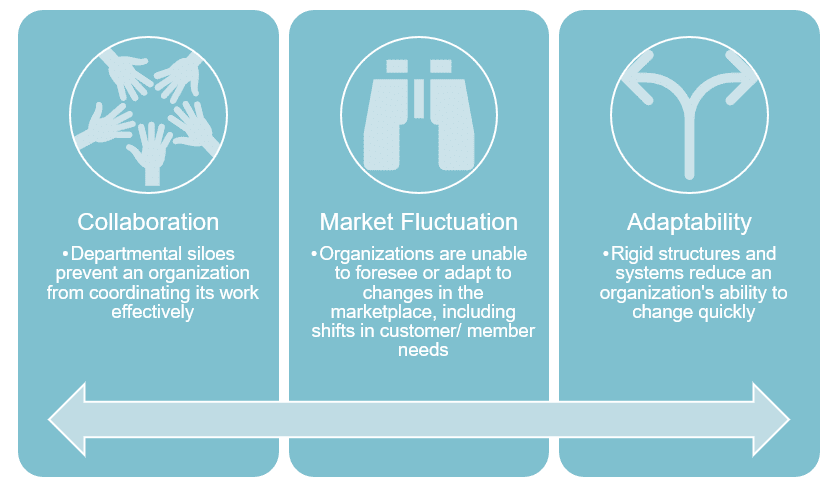April 15, 2021
Why Associations Fail at Strategy Implementation
Written by: Suzanna Kelley, MBA, FAIA
After a year of intensive research, discussion and planning, your board of directors has approved an ambitious, multi-year strategic plan. Staff and volunteer leaders celebrate, anxious to witness the impact and results of this critical strategy-setting work. In reality, though, the important work has only begun.
According to a study from The Economist, 88% of senior executives recognize the importance of strategy implementation while 61% admit to experiencing implementation challenges. Even more alarming, only 56% of strategic initiatives have been described as successful over a three-year period. What causes these setbacks and how can organizations reverse the practices that have limited success in the past?
In this blog series, we cover:
- Common pitfalls to avoid so you can accelerate your association’s growth and increase value for members
- Key elements of success related to operations and cross-team work
Let’s start with a focus on the importance of clear goals and leadership vision as the foundation for success in strategy implementation.
The typical association strategic planning process
In your strategic planning efforts, you may have conducted member or nonmember research, collected input from your board and senior staff, and reviewed your previous strategic plan. All of this information was synthesized into a concise and aspirational strategy document.
Next, your staff developed department-level operating plans and budgets in support of the plan. These documents outlined the specific tactics to be undertaken, the resources required to achieve the goals, timelines and hopefully some metrics for success.
Does all of this translate into a roadmap that guides your association’s critical day-to-day work? Actually, no. Many organizations, despite all of this effort, aren’t able to make the progress they set out to achieve. So, why is it that we struggle with translating our strategy into action?
Challenges and barriers
To realize measurable change, organizations must understand the breakdown between strategy and execution. Three common challenges often emerge as the strategic plan moves into its implementation phase:

Source: Why Good Strategies Fail, The Economist
The way forward
How does an association with enthusiastic volunteer leaders and constrained resources, like staff time and legacy programs that you can’t seem to sunset, move forward? There are a number of steps you can implement at any time to improve your chances of meeting your goals. In this blog, we cover step one:
Be clear on where you are going
Fundamentally, one of an organization’s greatest challenges is to translate a conceptual strategy into action. First and foremost, the team needs to understand where it is going before deciding how to get there.
Leadership vision and staff buy-in is critical. The CEO and senior team must be able to share a clear strategic vision with staff. A clear vision helps staff translate organizational-level strategies into department-level goals and tactics.
How do you do that?
- Talk about the plan. As leaders of an association, you can’t talk about the plan enough. Fold the vocabulary of the plan into everyday discussions so that it becomes second nature for all staff—including those who weren’t part of the original strategy-setting efforts.
- Go beyond board and senior team buy-in. Sometimes, CEOs spend so much time building support from the board, they don’t focus on the stakeholders who are critical to executing the plan. Staff at every level of the organization should understand:
- Where the organization is going, or the vision
- How individual jobs line up with the implementation of the organizational goals
- How to maintain and pivot strategic goals during times of turbulence and change—during these times, it is more important than ever to communicate with your team about priorities
- Make the plan highly visible to members. Members should see the priorities come through clearly and consistently in your messaging to them and in the work of the association.
Clarity on the path ahead and consistency in your approach is critical to success.
Next steps
Is your strategic house in order? If you don’t have a plan that is actionable, get in touch to find out how we can help with strategy implementation.
Learn more about strategic planning and implementation here:
- 8 Tips for Strategic Plan Implementation
- McKinley’s Strategic Guidance Services
- And watch for the rest of our strategy implementation blog series!
Governance and Leadership
4 min read
| March 7, 2024
Maintaining motivation and persistence in DEIAB work
Read More
Governance and Leadership
3 min read
| February 15, 2024
2024 Association Partner of the Year: Jay Younger
Read More
Governance and Leadership
5 min read
| January 30, 2024






